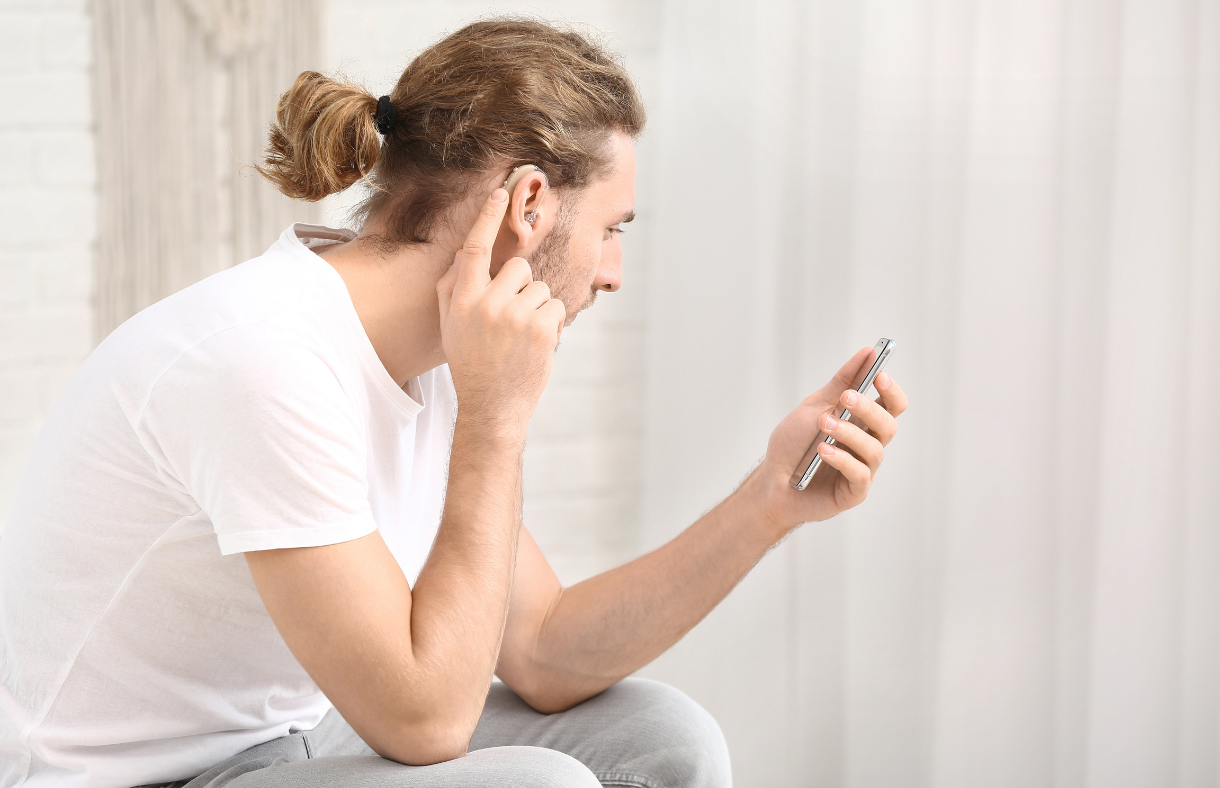In recognition of Deafblind Awareness Week this June 25–July 1, today we look at assistive technology for people with impaired hearing and/or vision. Worldwide, over 1.5 billion people have hearing loss; at least 175 million have blindness or low vision; and as many as one in 50 may be “deafblind,” meaning that both hearing and sight are impaired to the point that quality of life is affected.
Deafblind Awareness Week coincides annually with the June 27 birthday of Helen Keller (1880–1968), the famous deafblind activist and namesake of the National Center for DeafBlind Youths and Adults. While Keller lived well before the age of smartphones, she was a powerful voice for disability advancement (not to mention an ACLU co-founder and NAACP supporter, despite coming from a well-off white family in the post-Reconstruction South), and she no doubt would be pleased at how 21st-century technology has improved life for people with sensory impairments.

Assistive Technology for People with Hearing Loss
Since many people with hearing loss also have speech impairments, the following list of BridgingApps recommendations includes speech-generation technologies.
- AAC apps and devices are frequently marketed to families with autism-related speech concerns, but are helpful to anyone who struggles with putting thoughts or feelings into words others can comprehend. (AAC stands for “Augmentative and Alternative Communication.”)
- The Ava app offers real-time captioning for real-life conversations.
- GoTalk Now, an iPad app, helps users build “communication pages” to “talk” to others. This is one of many AAC apps that use “build your own system” approaches, particularly popular with children who have no verbal-communication experience.
- Otter transcribes recorded conversations and programs.
- XanderGlasses, worn like typical glasses, generate captions that display literally before the wearer’s eyes.
See also:
Assistive Technology for People with Low or Nonfunctional Vision
Cristen Reat, our BridgingApps Program Director, shares the following list of “favorite apps related to vision disabilities”:
- BARD Mobile book reader
- Emergency by the Red Cross. “I especially like the Toolkit feature that allows families to make a plan—including meetup point, evacuation point, and out-of-town contacts—in just a few minutes.”
- Learning Ally audiobooks
- Seeing AI for verbal descriptions of physical surroundings
See also:
Assistive Technology for Deafblind People

For people with severely impaired hearing and vision, digital assistive technology is tricky, especially with touchscreen-operated devices that require more than just touch to navigate accurately.
This is also a problem for users with purely visual impairments, and technology is addressing that issue with such devices as the Kapsys smartphone, which features a physical keypad and hearing-aid-compatible voice technology. Indeed, many people who identify as “deafblind” have some level of functional hearing and/or vision, and can use some standard apps with or without other assistive technology.
Nor have developers forgotten those who rely exclusively on the sense of touch. “Refreshable braille displays” translate digital tech into physically tangible form, and are compatible with many apps. For those interested in further exploring deafblind assistive technology, the following articles may prove helpful:
- Deaf-Blind Accessibility Apps
- HumanWare Communicator
- Introducing BrailleNote Touch
- This App Makes Your Smartphone Accessible for Deafblind People
Communicating When Someone Has a Hearing and/or Vision Disability
Assistive technology alone doesn’t solve every issue: some disability-related challenges occur on the purely human level. If you’re among those with functional hearing and eyesight, who feel awkward talking with someone who has an impairment, the first rule is to let them choose the preferred method of communication. If you act on first impulse or secondhand information, you’ll likely make things more awkward.
Don’t raise your voice unless you’re specifically asked to speak louder. Even then, don’t shout. Shouting distorts your mouth movements, making things harder for anyone who relies partly on visual input. Plus, many people are insulted by the high-volume approach, taking it to imply that they can’t understand anything (verbally or intellectually) unless it’s pounded into them.
Don’t get impatient with slow speech—or slow text-to-speech apps. No one likes being rushed, especially over things they can’t help. Stay relaxed and stay interested, and you’ll pick up additional ideas for effective communication in any situation!


Can you add a section on the new less expensive OTC hearing aids?
Tinnitus i super common.
Thank you for your comment. As we research the new less expensive OTC hearing aids, we will add them to our App Search Tool and potentially create a new blogpost with our favorites. Stay tuned!
correction – Tinnitus is common